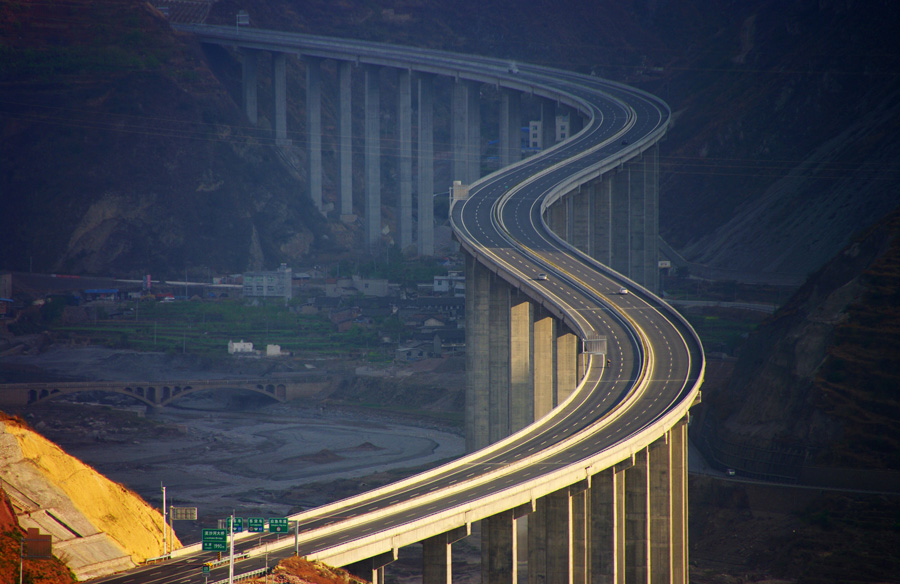The wonders of the Yaxi Expressway
Updated: 2015-05-06 15:02
By XIAO LIXIN in New York(China Daily USA)
The Yaxi Expressway, a section of the Beijing-Kunming highway, is a 240-kilometer (149-mile), ladderlike road that reaches for the sky. What makes it unique is that with each kilometer, the roadway ascends by 7.5 meters. The Yaxi Expressway project was started by the central government in 2007 with an investment of 20.6 billion yuan ($3.3 billion). Made up of 270 viaducts and 25 tunnels, it runs from Ya'an to Xichang, Sichuan province, and opened to motorists in April 2012. The expressway was designed to minimize impact on the environment, and spiral tunnels were used to reduce the eff ect on mountains.
Construction engineers and workers had to overcome extraordinary challenges, given the severe geographical conditions in Sichuan. More than half of the expressway are tunnels and viaducts through mountains. Moreover, during the five-year project, construction engineers and workers had to overcome geological hazards such as gas, water spouting, faults and rocks bursting.
The Ganhaizi and Tiezhaizi dual spiral tunnels are the world's first of their kind with small radiuses. Nibashan tunnel is the largest deeplying tunnel in China, with a depth of 1,650 meters and a length of 9,962 meters on the left line and 10,007 on the right line. That tunnel has shortened a drive that took several hours around mountains and through valleys to only 10 minutes.
The expressway also improves Sichuan's access to South and North China, providing a picturesque drive as well as natural beauty, which is a tourist attraction. The Yaxi expressway is expected to play a key role in helping millions of Tibetan, Han, Yi and Hui people out of poverty, by supporting sustainable local economic growth in western Sichuan, an area rich in natural resources.
